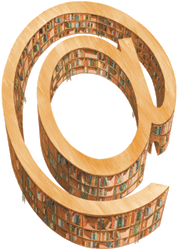The MICHAEL Data Model
The MICHAEL data model links the description of the digital collection to contextual information essential for its completeness and understanding, with the goal of allowing users to correctly assess the relevance of the digital collection in question to their own interests or research purposes.
The MICHAEL Data Model links the digital collection entity or class through pre-defined relations to:
- the entity Institution, which provides a concise description of the organization responsible for the development or maintenance of the collection, with its name, acronym, addressand contact information, in addition to information on whether the organization is public or private; finally, the organization institutional type and jurisdictional information are indexed;
- the entity Service/Product, which describes the supports (website, DVD, CD-Rom, or other) through which the digital collection can be accessed and consulted. The Service/Product records provide the necessary technical details for identifying and accessing the online service, or for accessing the offline product containing or making available the digital collection to which the description is linked;
- the entity Project/Programme, which provides the right place for the registration of information related to the context within which the digital collection was put together: funding resources, the span of time during which it was carried out, whether the digitisation project was carried out using original physical items or intermediate analogical formats, and so on;
- finally, the entity Physical Collection makes it possible to link digital collections to digitized physical collections in all those cases in which the digital collection is the outcome of the systematic digitisation of one or more physical collection, or of the main part of a single physical collection.
MICHAEL uses standard terminology in relation with descriptive elements deemed to be of key importance for the indexing and recovery of information. For the most part, these are brief dictionaries identified or developed on the basis of the main international standards (Dublin Core, ISO, W3C, UNESCO etc.). Some terminologies have been developed or personalized at national level.
